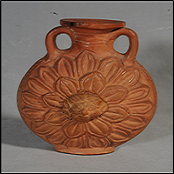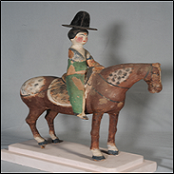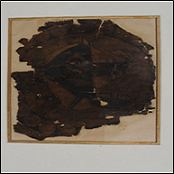The National Museum Foundation Day and The Central Asian Antiquities Museum
By :
The National Museum Foundation Day and The Central Asian Antiquities Museum
December 18, 2021
A tribute to Late Dr. Binoy Kumar Sahay
In May 1946, the Maurice Gwyer Committee prepared the blueprint for establishing the National Museum in Delhi. In the year 1949, The National Museum was inaugurated in the Rashtrapati Bhawan, New Delhi, by C. Rajagopalachari (The First Indian Governor-General of India, 6 Jun 1948-26 Jan 1950). In the year 1957, the Government of India decided to demolish the building of the Central Asian Antiquities (CAA) Museum whence the National Museum building was built up on that side. As part of the greater Indian culture, the special collection of Sir Aurel Stein along with the resourceful library was incorporated into the National Museum.
The National Museum was finally shifted to its present location at Janpath, New Delhi, on 18th December 1960.
Located at continental crossroads, Central Asia is an exceptional region in terms of the cultural connections. It was a melting pot for people of diverse races, eventually paving way for a cosmopolitan culture. Whether it was trade caravans or the traversing monks, passing through the steppes of the crucial trade route, for centuries the enriched land of Central Asia has served as the great straddle between East and West.
For more on Central Asian Antiquity: http://www.nationalmuseumindia.gov.in/en/photo-gallery/category/25
CAA Collection and Dr. Binoy Kumar Sahay
The greatest of the all antiquities were rediscovered by Sir Marc Aurel Stein, the Hungarian-born British archaeologist from colonial India. The collection of Sir Aurel Stein at the National Museum spans over more than twelve thousand objects. These objects were discovered from the sites (like Khotan and Niya) that were close to an oasis along the ancient – southern and northern – trade routes. Research has revealed the nature and growth of the Central Asian civilization and its relation with the neighbouring countries, especially India. The gallery is a redeemed segment of the National Museum showcasing the cultural elements of composite traditions.
Late Dr. Binoy Kumar Sahay was a Deputy Curator in National Museum, who uprightly held the charge of multiple galleries and looked after their curatorial management. He joined the National Museum in November 1989, in the Numismatics and Epigraphy and Jewellery Collection
Later on, he was given the additional charge of the Central Asian Antiquities Collection (CAA) in the year 1998. Since then, his focus and attention was majorly towards the rare collection of the CAA department and he did his best to portray antiquities to the stature of a world-class gallery.
In addition to several other projects, he spearheaded the Museum's Digitization Project and led the Conservation Laboratory at the National Museum. Being one of the most difficult and onerous tasks, with accessioning and documenting the artifacts and getting them verified by the experts, he accomplished them with adroitness. He also successfully exhibited numerous exhibitions, both nationally and internationally.
In his last days, he was engaged in setting-up the new galleries exhibiting the treasured Central Asia Antiquities, excavated by British Archeologist Sir Marc Aurel Stein in the early 20th century.
Dr. Sahay was indeed a dynamic personality with a positive attitude and approach. He was one of them who had easily adjusted to various environments and situations, and always came up with brilliant solutions for seemingly impossible problems. He was one of the prominent archivists of the Silk Road, in India. His quiet, gentle and polite demeanor endeared him to all those who came in contact with him (for however short a span of time).
Few of the works that have been close to his heart include:

Pilgrim’s Bottle

Lady Horse Rider

Boar Silk Face Cover
1. Pilgrim’s Bottle
One of the well-crafted bottles that the National Museum has in the Central Asian Collection, used by pilgrim’s during their travel through arid deserts of Turfan. Either side of the body of the bottle is decorated with a fully bloomed lotus. The lotus has two rows of petals. Central part of each lotus is decorated with an appliqué grotesque human face. The bottle has a small mouth. Through two ring-like handles, the bottle could be hung easily on the waist for carrying pious water. The site of Yotkan and nearby Khotan has numerous beautiful terracotta objects
2. Lady Horse Rider
This beautiful sculpture depicts a lady horse-rider of the T’ang period. Her forehead is decorated with a beauty mark in red. This lady rider breaks the monotony of having only male riders in the region. Here, she seems to be bold and confident of what she holds in her mind, also her dressing somehow becomes the sign of class, power and capabilities (in modern lingo it's called power-dressing). This particular artifact becomes the prime example of changes that the contemporary society was confronting.
3. Boar Silk Face Cover
Every culture has beliefs (of negative and positive surroundings) and motifs that act as protective gears against the fear of the unknown. Boar heads surrounded with pearl roundels acted as one such protective motif that found popularity in the Central Asia region. The present object is a silk fragment, found at Astana cemetery, that was used to cover the face of the dead or deceased person.
For more on National Museum :http://www.nationalmuseumindia.gov.in/en
For a Virtual Tour of the National Museum :https://artsandculture.google.com/streetview/national-museum-delhi/WwHAh-RXTpHWrA?sv_lng=77.2195803&sv_lat=28.6116451&sv_h=130&sv_p=0&sv_pid=7S6ZCNxUuMmtyiPKaJU-pQ&sv_z=1
Source: Inputs from the CAA Team and Staff, National Museum (New Delhi).
Special thanks to Ms. Shikha Gupta, Ms. Neha and Himanshu from the CAA Team From Dr Divya Sethi